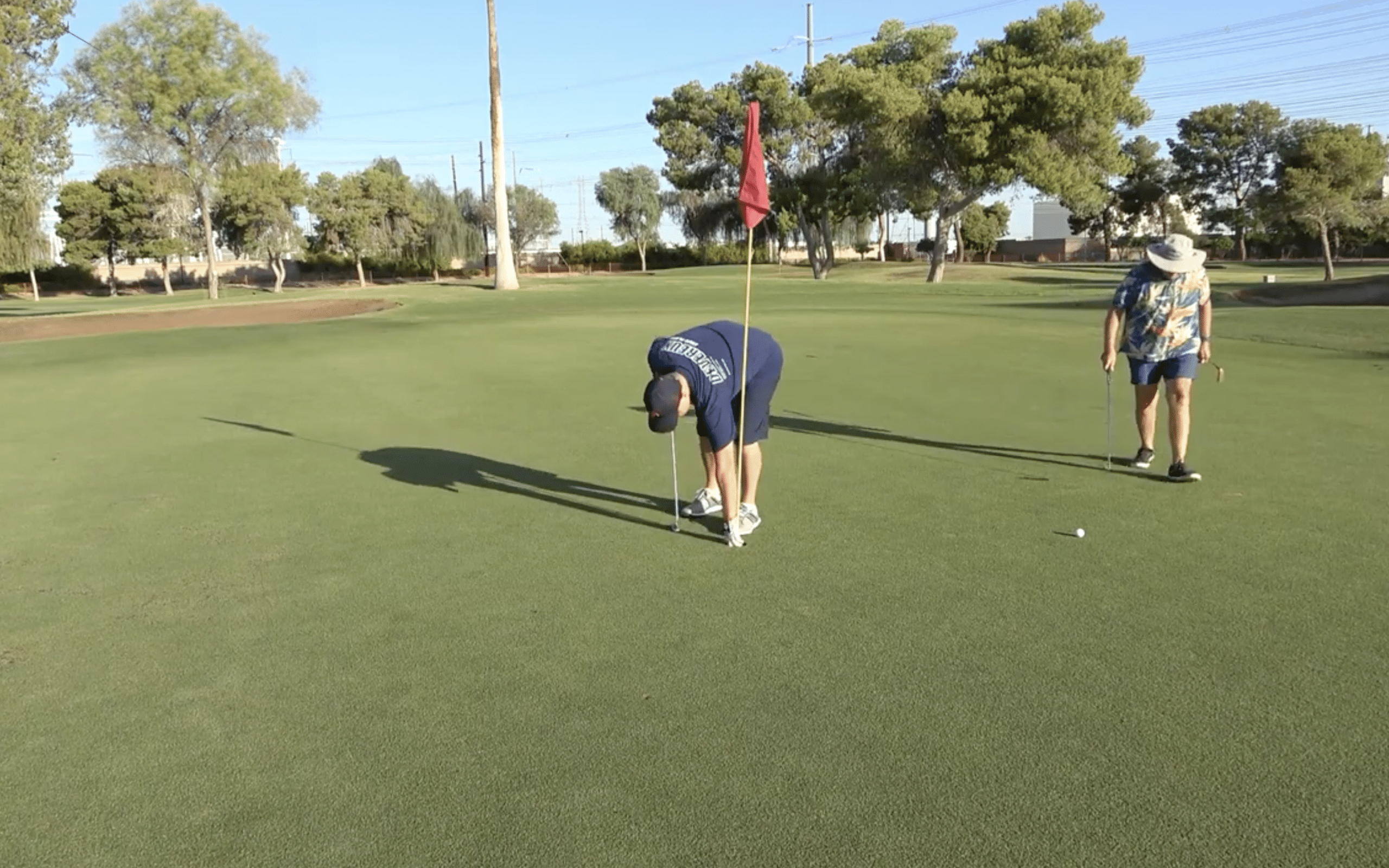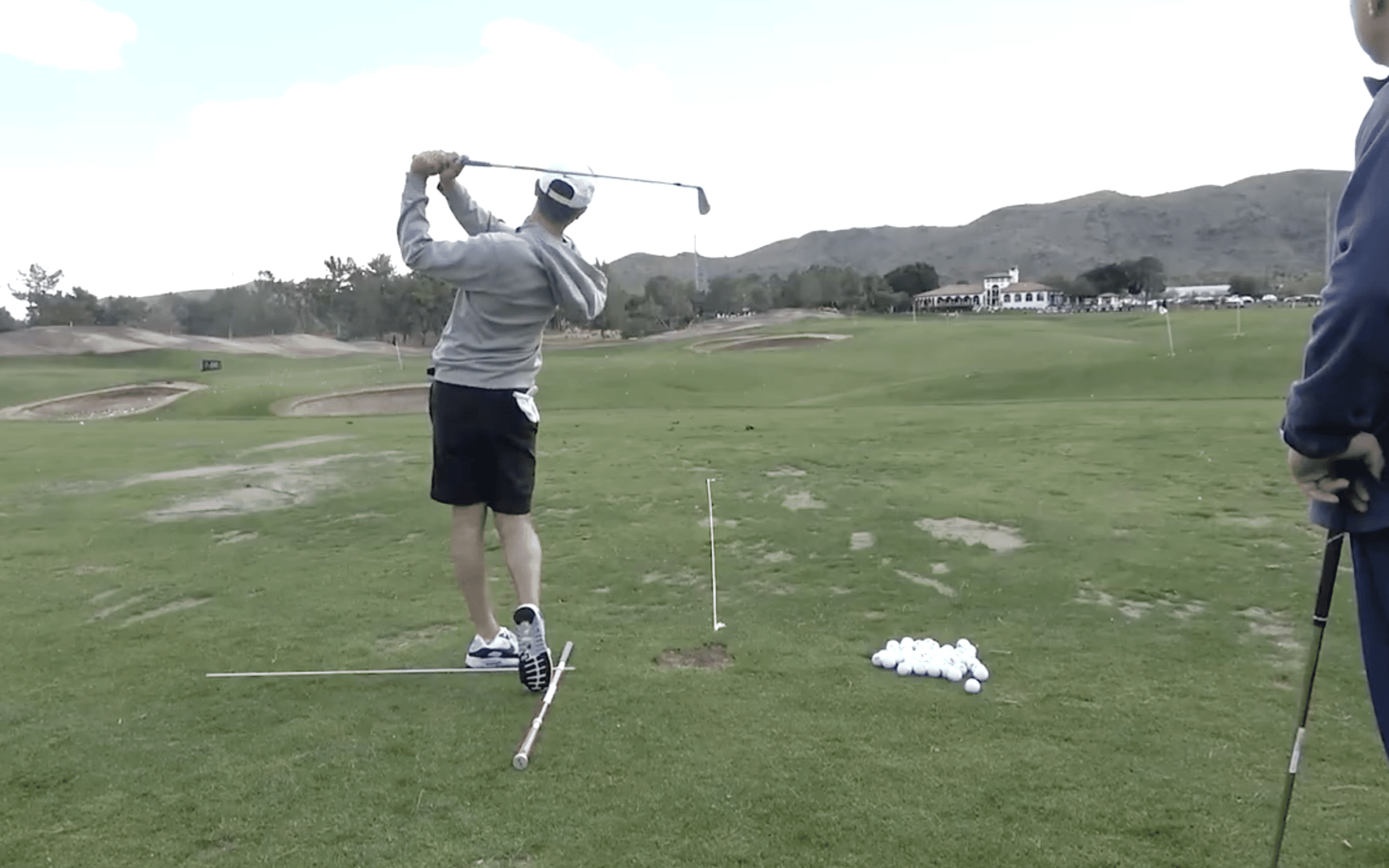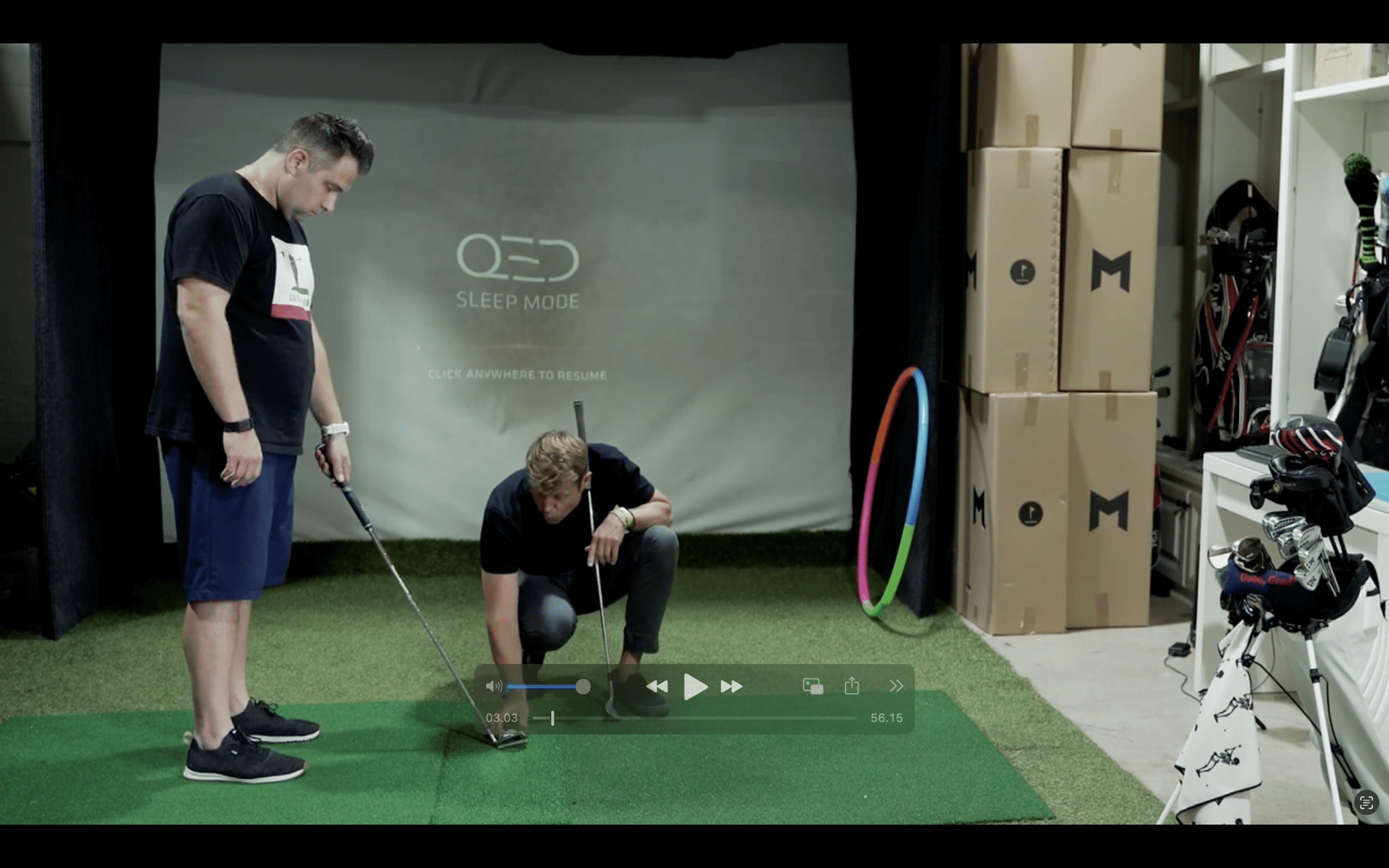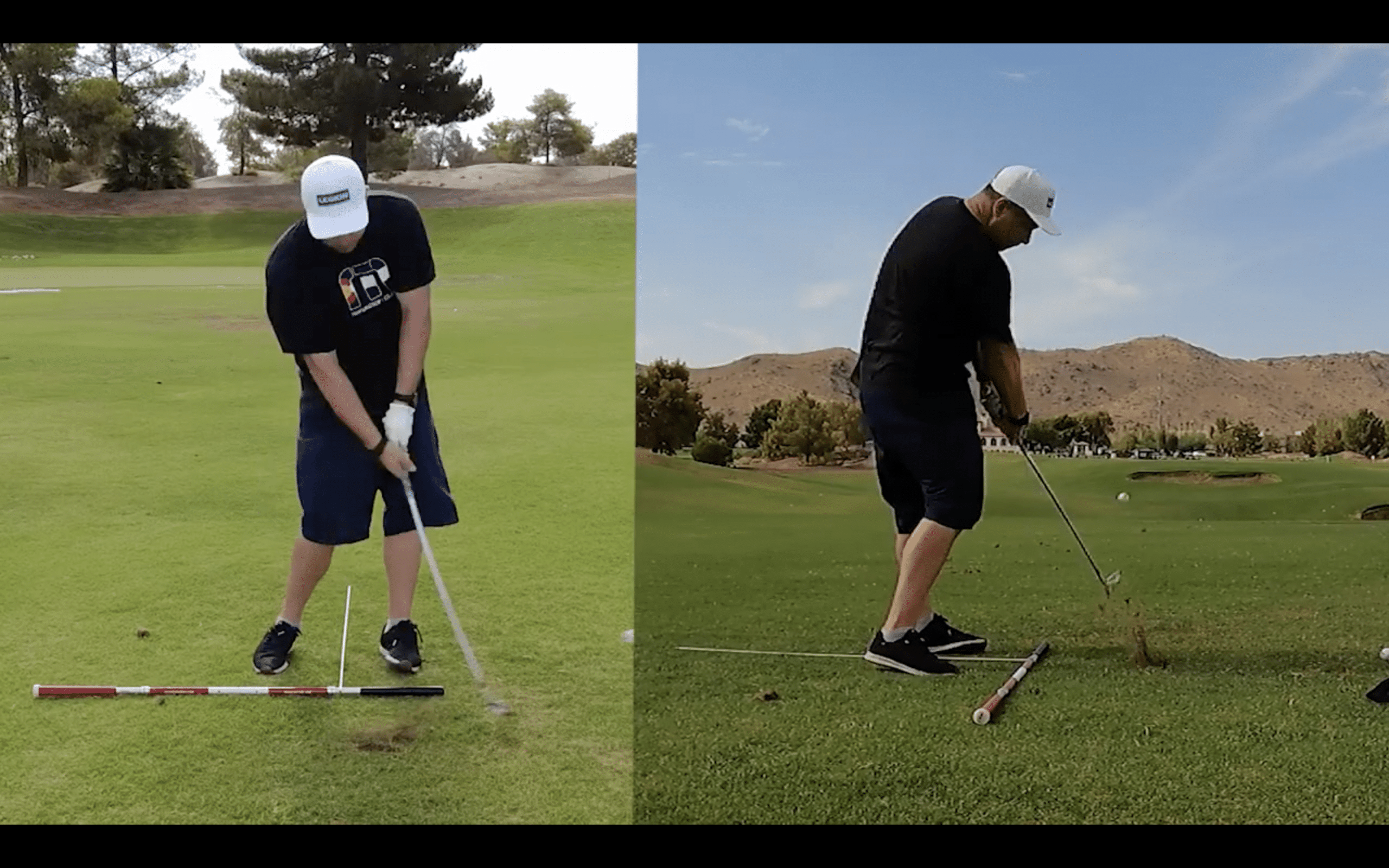Your golf ball position directly controls whether you'll hit it pure or chunk it into the ground. Moving the ball just ¼ inch can change your launch angle by 3 degrees and affect distance by up to 10 yards! For drivers, position the ball inside your front heel for an upward strike, while shorter irons need the ball closer to center for a downward blow. Consistent positioning eliminates fat and thin shots that plague inconsistent golfers, and honing these fundamentals reveals the secrets to reliable ball-striking.
When you move your golf ball just a couple of inches in your stance, you're actually reshaping your entire swing mechanics without even realizing it. The key point: even tiny shifts of 2.14 cm laterally completely change your shoulder alignment and clubface aim. That's less than an inch!
Moving the ball forward or backward alters your thorax, hip, knee, and ankle angles, which directly affects your posture and balance. Your weight distribution changes too—the ground reaction forces actually increase on whichever side the ball sits. This means you're literally standing differently before you even swing. Ball position also affects your swing path and attack angle, which are crucial components that determine the quality and direction of your shots.
Most significantly, ball position determines where your clubface strikes the ball. Off-center hits from poor positioning kill your distance and accuracy, while consistent positioning leads to better impact location and shot quality. Research shows that golfers' ability to accurately feel impact location varies significantly based on their skill level, with better players demonstrating superior awareness of where the club connects with the ball. Proper ball position also influences your launch angle, which directly affects the trajectory and distance of your shots.

Three key factors control your ball's launch movement: angle of attack, clubface position, and impact location—and your ball position directly influences all of them. Here's what happens: when you move your ball just ¼ inch sideways, you're changing your launch angle by 3 degrees! That's like switching from a 7-iron to an 8-iron.
Move the ball forward in your stance, and you'll create a more upward angle of attack—perfect for higher, softer landings. Place it too far back, and you'll hit down steeply, sending low bullets that won't carry far. Your ball position also shifts your body's center of mass and changes how forces transfer through your swing. This affects everything from your wrist release timing to clubhead speed at impact.
Professional golfers understand that consistency in ball position is crucial for maximizing performance, as even minor variations can result in carrying the ball 10 yards farther or shorter than intended. Research shows that left-sided ball positions create open shoulder alignment, which directly affects your club path and impact dynamics. Proper stance width should be adjusted alongside ball position to maintain consistent contact and launch angles for optimal shot control.
Your stance width isn't just about comfort—it's the foundation that determines where your ball should sit for ideal contact. The fact of the matter is: wider stances naturally push your ball position slightly forward, while narrower setups move it back.
With your driver, you'll use your widest stance—about 2 inches outside each shoulder. This positions the ball just inside your front heel. For mid-irons like your 5-iron, match your shoulder width and place the ball roughly 10 inches from your left foot. When you're hitting shorter irons, narrow your stance about 2 inches inside shoulder width, which automatically moves the ball back toward center.
This relationship works because your stance width affects how you distribute weight and rotate through impact! Accurate ball position impacts distance, accuracy, and trajectory for every shot you play. Proper ball placement works together with swing path fundamentals to eliminate common ball flight issues and create more consistent contact. Remember to open your lead foot toward the target at 25 degrees to optimize your setup position.
After you've nailed down your stance and ball position, the next critical piece of the puzzle is understanding how your club approaches the ball—both vertically and horizontally. Your angle of attack describes whether you're hitting down or up at impact, measured in degrees. Think steep downward strikes for short irons versus shallow sweeping motions for drivers. The key point is: swing path indicates your clubhead's horizontal direction—inside/out, outside/in, or straight through. These two factors work together like dance partners. A narrow downswing typically creates a steeper attack angle with an inside/out path, while wider swings produce shallower angles with more outside/in paths. Your club speed also plays a crucial role—faster speeds allow you to hit down more aggressively while still maintaining proper ball flight, whereas slower speeds require less downward strikes for optimal results. Getting this coordination right controls your shot direction, flight path, and spin—making consistent contact much easier! The position of your clubface at impact, known as dynamic loft, directly influences ball trajectory and is heavily affected by your angle of attack. For drivers specifically, achieving the optimal upswing contact helps maximize both launch angle and distance potential.

Understanding how your club approaches the ball sets the stage for something even more precise—the mathematical relationships that determine where you should actually place that little white sphere.
Here's the thing: small changes create big results. Moving your ball just 2-4 centimeters shifts your shoulder rotation, weight distribution, and clubface angle dramatically. Think of your lead shoulder as the swing's anchor point—it defines ideal positioning zones rather than one perfect spot.
Your body compensates when the ball sits outside these mathematical zones. Move it too far forward or back, and you'll automatically adjust your stance, changing launch angles and spin rates. The geometry gets complex quickly, but the concept stays simple: position the ball within calculated zones based on your club type, and you'll achieve consistent impact conditions without fighting your natural swing mechanics. Achieving center contact on the clubface becomes significantly easier when your ball position aligns with these mathematical principles. The loft affects both your ball's launch angle and velocity, making club-specific positioning even more critical. For drivers, optimal positioning falls between lead shoulder and lead heel to maximize distance potential.
When golfers struggle with inconsistent shots, they're often making the same predictable ball position mistakes that sabotage their entire game. The biggest error? Using identical ball placement for every club in your bag. You'll see golfers position their driver and 7-iron exactly the same way, then wonder why they're hitting fat shots or thin rockets that fly over the green.
Here's what's really happening: your driver needs the ball opposite your left heel for ideal launch, while shorter irons work best when positioned progressively toward your stance center. When you ignore these adjustments, you're interfering with your swing's low point and creating inconsistent contact.
Another common mistake involves lateral positioning errors that throw off your shoulder alignment, sending shots left or right of your target.
For chipping specifically, moving the ball position slightly back in your stance helps ensure you strike the ball before the turf for cleaner contact.

Top golf instructors don't just tell you where to put the ball—they teach you a systematic approach that removes guesswork from your setup routine. They'll have you develop a repeatable pre-shot ritual that starts with ball placement, then foot positioning. The key point is: coaches focus on building muscle memory through specific drills that lock in your ball-to-lead-foot relationship for each club.
You'll practice preset positions repeatedly—driver at the inside heel, mid-irons slightly forward of center. Smart instructors use alignment rods and visual markers during lessons, giving you reference points that translate to the course. They'll teach you to set your head position first, then adjust your feet. This method reduces that mental load during rounds and creates the consistency that separates good players from great ones!
The most effective instructors incorporate breathing techniques into your setup routine, helping you maintain calm focus while establishing proper ball position and alignment before each shot.
Since most golfers struggle with inconsistent ball striking because they eyeball their setup differently every time, perfecting specific practice drills becomes your fastest path to reliable contact.
Start with tee markers on the ground—place one where your ball should sit for each club type. For drivers, that's at your lead heel, while wedges sit dead center in your stance. The key point is: your lead foot becomes your reference point for everything! Practice hitting shots while keeping the ball one club head length inside that front foot for irons.
Use alignment sticks parallel to your target line for visual reinforcement. Try lifting your trail foot during driver practice swings—it'll train you to find that forward ball position naturally. Move the ball forward for higher shots, backward for lower trajectories.
When practicing short game shots, remember that understanding the difference between chip and pitch shots will help you position the ball correctly for each situation, with chips requiring a more centered ball position while pitches need the ball slightly forward.

On uphill lies, you'll want to move the ball slightly forward in your stance and lean more weight onto your back foot. This helps you swing up the slope naturally. For downhill lies, do the opposite—position the ball farther back in your stance and shift weight to your front foot. This prevents you from hitting the ground initially and guarantees clean contact before the slope interferes.
Yes, you should definitely adjust ball position for wind conditions. Move the ball back about an inch in your stance during windy conditions to create a lower, more penetrating ball flight. This reduces wind interference by up to 20% compared to normal ball position. Headwinds become less obstructive, and you'll maintain better control and accuracy throughout your round.
When you're hitting off a tee, position the ball inside your front heel to catch it on the upswing—this enhances distance and prevents hooks. For fairway shots, move the ball back about one ball-width from your tee position, placing it slightly forward of center. This lets you strike down or level through impact since there's no tee elevation to help you out.
For draws, move your ball slightly back from your normal position—closer to the middle of your stance rather than off your front heel. This encourages the inside-out swing path you need for right-to-left ball flight. The key is hitting the ball earlier in your downswing arc when the club's naturally swinging more to the right, creating that draw spin you're after.
Your height and arm length directly impact where you should position the ball. If you're taller, you'll naturally stand farther from the ball—about 29 inches from ball center to your ankle center. Longer arms encourage a steeper swing, so move the ball slightly forward. Shorter arms create flatter swings, favoring more centered positioning. Don't use one-size-fits-all advice—customize your setup based on your body's proportions for consistent contact.
You've got the knowledge, now it's time to put it into action! Ball position isn't rocket science, but it'll change your game when you nail it consistently. Start with the basics—driver forward, wedges back—then practice those alignment drills until muscle memory kicks in. Remember, even tour pros check their setup daily. Your next round's waiting, so grab your clubs and make every shot count!